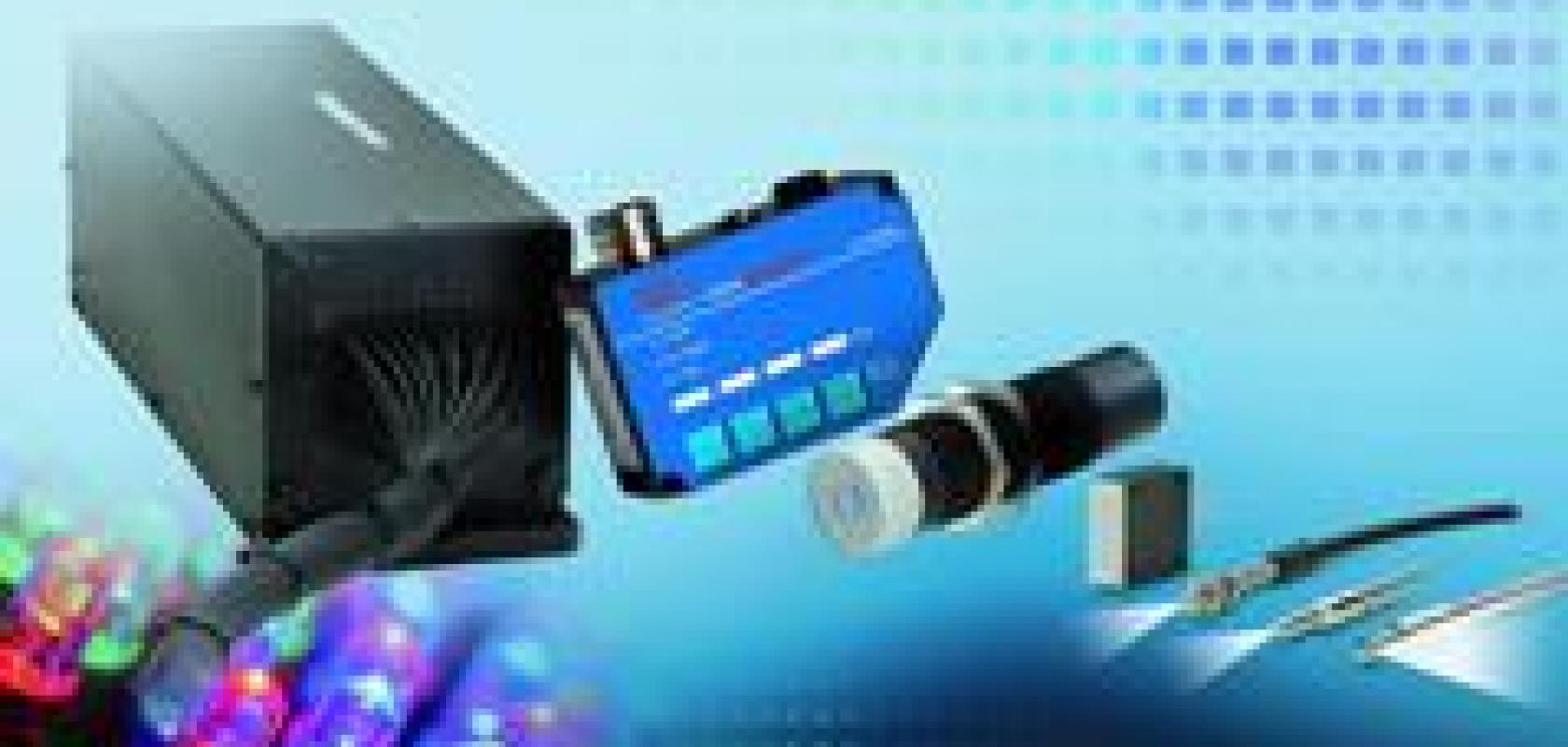Micro-Epsilon has launched a range of colour recognition sensors to the UK market. The sensors provide up to 20 times higher resolution than conventional colour recognition sensors and offer more stable, reliable colour measurements, even on shiny or reflective surfaces.
The colorSensor LT sensors operate using optical fibres and include low cost, entry-level sensors through to high precision, multi-channel colour recognition systems. The LT range offers measuring distances from 2-100mm and up to 255 colour memory locations. As well as exact colour, these memory options enable the user to store specific tolerance limits for different applications. During colour recognition inspection, the sensor compares the colour it has been taught with the colour currently detected. The sensors are supplied with their own set up and configuration software and a graphical user interface that enables the user to adjust the sensor to suit different applications.
Using new LED light sources, LT sensors can now be mounted much further away from the measurement target if required, at distances of up to 2,000mm.
Micro-Epsilon's colorSensor OT series of colour recognition sensors operates by using fixed optical systems. These sensors are able to recognise the colour of objects from longer distances (from 2mm to 800mm). Different models are available to suit different surfaces and materials, including shiny, reflective and structured surfaces, as well as versions for recognising UV markings. OT sensors can even recognise colour variations along or between target objects and materials. This is particularly beneficial to manufacturers of vehicle interiors, leather, embossed film, fabrics, wood veneers and large painted components, where the smallest colour variation is deemed unacceptable by the customer.
OT sensors use eight white-light LEDs, whose brightness can be controlled as required. These LEDs are used as light sources for diffuse illumination. The switching status is displayed using five yellow LEDs. The sensors are insensitive to external light and have a true colour detector that filters RBG values in a similar way to the human eye.
All sensors in Micro-Epsilon's colorSensor range benefit from a 'teach-in' function. This enables the sensor to learn and adapt to the application by using samples of the correct colour. Following this process, the sensor is able to compare the colour samples it has been taught with the target object, then operating independently.


